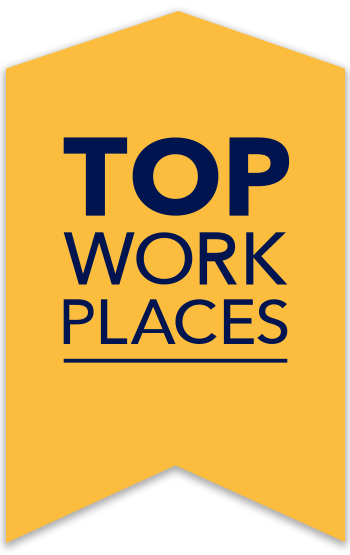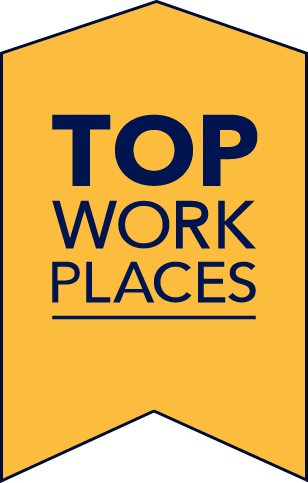Diversity is a hot topic in HR and has been for many years. People used to think DE&I was all about hiring people of color for the sake of diversity statistics. Today, for more substantial reasons, diversity, equity, and inclusion are essential for business performance.
We now know that removing biases from the hiring process produces better results, including a wide range of employee experiences, perspectives, and skills. Long story short: promote diversity, equity, and inclusion to attract top talent and boost innovation.
What is diversity hiring?
Diversity hiring isn’t about overlooking qualifications or checking boxes. It is the practice of recruiting candidates from a wide range of backgrounds, ensuring that individuals from all genders, ethnicities, sexual orientations, abilities, and other characteristics have an equal opportunity to succeed.
Diversity hiring aims corrects bias to create a more inclusive and representative workforce where everyone’s unique perspectives and experiences are valued and leveraged for the benefit of the organization.
The importance of a diverse workforce
Embracing diversity in the workplace unlocks numerous advantages for employees and organizations. Here are the key benefits of diversifying your workforce:
- Attract talent: A diverse and inclusive workplace appeals to top talent, ensuring your company recruits the best candidates from a wider talent pool.
- Reduced turnover: Employees who feel valued and included are more likely to stay with the company longer, reducing turnover and the costs associated with hiring and training.
- Driving innovation: Diverse teams bring different perspectives and ideas, leading to more creative and innovative thinking throughout the organization.
- Improved employee performance: Inclusive environments boost employee morale and productivity, making individuals feel more comfortable and motivated to think outside the box.
- Better decision-making: With various viewpoints and experiences, diverse teams are better equipped to consider different perspectives and make well-informed decisions.
DE&I recruiting and hiring best practices
Research by the Energage People Science Team uncovered DE&I initiatives in more than 200 organizations participating in the Top Workplaces for DE&I Practices award. Here’s what they found:
- Targeted recruiting: Many organizations use targeted recruiting to improve diversity, particularly focusing on racial and ethnic groups such as Black or African American (69%), Hispanic or Latina/o individuals, women (70%), and veterans (62%).
- Partnering with organizations: Some HR professionals partner with organizations that offer internship opportunities for underrepresented or marginalized groups (59%).
- Improved messaging: 83% of organizations review and correct job description language for bias, which can inadvertently drive away women, caregivers, and other groups.
- Bias-free questions: Eliminating 60% exclude questions about criminal history on job applications to ensure those with a criminal record aren’t immediately excluded from candidacy, which can disproportionately impact marginalized groups.
- Equitable interviews: 73% offer and communicate accommodations for interviews, providing more equitable interview experiences for individuals with disabilities or neurodivergent candidates.
Steps to build a diversity and inclusion strategy
Diversity hiring strategies aim to identify and minimize potential biases in recruitment and hiring processes. You must create an intentional diversity hiring strategy to ensure your hiring teams aren’t overlooking (or discriminating against) qualified candidates. These five steps are the perfect place to start.
Remember that diversity hiring is an ongoing process; reaching step five means it’s time to start the process again. Some steps might take longer than others. Don’t rush; instead, take your time with each one. This method is more rewarding for employees and your bottom line.
1. Conduct a diversity hiring audit
Successful diversity hiring strategies start with an honest audit. Conducting an audit of the current process shows teams where they stand and uncovers otherwise hidden biases. Understanding the strengths and weaknesses of the current hiring process is necessary for setting goals and implementing a more inclusive strategy. It may be challenging to accept biases, but acceptance is the first step towards lasting change.
2. Set goals
Once companies complete their audit, it’s time to identify and set goals for diversifying the hiring process. Goal setting is one of the most overlooked diversity hiring best practices. Whether you have one area to fix or many, starting small is crucial. Pick one metric to improve and one clear goal. Doing so makes it easier to identify what’s working and measure success. Staying focused on one goal at a time makes communicating and celebrating progress with your team easier.
3. Identify your ideal candidate
Diversity hiring is all about finding the most skilled candidates, no matter their background. Because it can significantly impact talent and performance, it’s essential for hiring teams to identify exactly what their ideal candidate looks like. Think of it like manifesting. The more clearly you define your goal, the easier it is to achieve it.
Don’t forget that leading by example is important, too. Promote diverse leaders with unique skills and experiences to remind employees how important diversity is to your organization’s long-term success plan. Plus, it attracts more applicants with shared DE&I values.
4. Ask for feedback
Employee feedback is the secret to success, always. Ask current employees, managers, and leaders questions about the current process and future initiatives. What they say will impact the strategy and might surprise you, but you’ll never know until you ask. To show appreciation for employee feedback, leaders must follow up with survey findings and new goals.
5. Measure and revise
One of the most critical parts of diversity hiring is sparking meaningful change. To have the most substantial impact, companies must continue to measure results, revise, and repeat the process. Especially when employee feedback is involved, sharing results and revisions with your workforce is vital. That way, everyone sees themselves and their unique perspectives as valuable parts of the organization’s future, which is what diversity hiring is all about.
Top Workplaces for DE&I Practices
The Top Workplaces for DE&I Practices award can significantly boost your company’s ability to attract talent and improve recruitment. Companies with the best diversity, equity, and inclusion create a workplace culture that resonates with job seekers who prioritize these values.
Showcasing your commitment to DE&I helps your organization stand out in a competitive job market, drawing a diverse pool of talented candidates. Nominate your company today for Top Workplaces awards to gain the recognition you deserve.

 Stand out with an award-winning
Stand out with an award-winning
